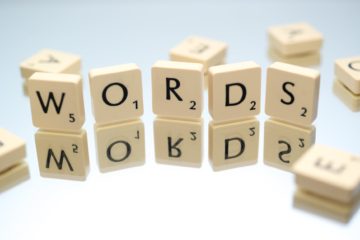An easy way to find your best customers and keep them coming back
“Business is a conversation because the defining work of business is conversation – literally. And ‘knowledge workers’ are simply those people whose job consists of having interesting conversations.”
David Weinberger
This post was written in collaboration with Jared Smart at Elite Media, LLC. Check out Elite Media for all your marketing needs.
If business is a conversation, how do you understand what people are telling your business, or talking to you about? What if we told you there was a way to listen to your customers, but also identify the ones who are most loyal to your brand and your company? What if we also told you that all the information you need to understand this, you already have and you don’t need to pay additional fees for extra data or market research?
There are many tactics to help identify and classify your audience (Net Promoter Score & Classification are just two of them). Another way to answer this is with RFM.
What is RFM?
Recency, Frequency, Monetary Value (RFM) is a classic tool used mostly for understanding the customer based on their spending habits.:
- Recency – How recently did the customer purchase?
- Frequency – How often do they purchase?
- Monetary Value – How much do they spend?
It’s important to look at all three factors together. If we were to look at each item individually they would only tell a small part of the story and we may end up focusing too much attention on outliers. For example, if you owned a toy store, it would be short sighted to look at a valued customer’s sales in terms of monetary value alone.
A customer could come in and buy up half of the princess aisle at one time, but never walk in the store again.
If you look at only frequency you may rule out someone who hasn’t come in often because they recently moved into the area but have young kids who love toys and could grow up with your store.
Similarly, a focus solely on recency could have you chasing your tail on customers who only bought a piece of gum at checkout or who came in because of a recent sale.
Taken as an aggregate however, Recency + Frequency + Monetary-Value can give you a strong sense of which customers are most likely to return, who your most valuable customers are, and how to transform occasional buyers into regular customers.

How do we measure it?
While there are differences in implementation, the theory is the same: give each person a score within a specified range for each dimension, then classify them.
Scores will use a range from 1 – 3, where 1 is the low score and 3 is the high score.
Let’s look at two examples:
Loyal-Larry & Susie-Saver
Loyal-Larry
Larry loves visiting your store and makes purchases each visit. You haven’t seen Larry come in recently so he gets a ‘2’ for Recency. However, since he’s there often, he scores a ‘3’ for Frequency. Larry’s purchases are fairly big, but compared to other sales they are average, so his Monetary Value score falls within the ‘2’ range.
We will give Loyal-Larry an RFM score of 232.
Susie is great but you don’t see her too often. When she does come into the store she makes some of the largest purchases you have on record! Since you haven’t seen Susie in a while she scores a ‘2’ for Recency. Her Frequency score is a ‘1’ because she saves her money to make those big purchases, but her Monetary Value is a ‘3’ because of how much she does spend.
Susie-Saver’s RFM score: 213.
Susie-Saver
What do these scores mean and how can they help you better serve each individual? The table below outlines a few key segments you’ll want to identify and marketing approaches to consider:
| Segment | RFM | Description | Marketing |
| Best Customers | 333 | Customers who bought most recently, most often and spend the most. | No price incentives. Market new products and offer loyalty programs |
| Loyal Customers | X3X | Customers who buy most often | Provide deals to reward frequent visits. Use R and M to further segment. Encourage a return to the store or increased spending. |
| Big Spenders | XX3 | Customers who spend the most | Market your most expensive products. |
| Almost Lost | 233 | Haven’t purchased for some time, but purchased frequently and spent the most. | Aggressive price incentives. |
| Lost Customers | 133 | Haven’t purchased for a long time, but did purchase on a frequent basis compared to other customers. When they did purchase they purchased a lot. | Aggressive price incentives. |
| Lost Cheap Customers | 111 | Last purchase was long ago, purchased infrequently and spent little. | Don’t spend too much trying to reacquire. |
Based on his score, Loyal-Larry would be classified as a ‘Loyal Customer’. The best thing for him is to incentivize something he is doing already: coming often. A good tactic is a frequent-buyer card like a “buy 10 get 1 free”. Also, for other ‘loyal’s’ use their R & M scores to better understand each. Some might be loyal but not spend much while others spend a lot but you haven’t seen them recently. What are some other ways you could increase Larry’s score in the other categories?
Based on her shopping behavior, Susie-Saver is classified as a ‘Big Spender‘. The tactic with her is to market your most expensive items. Maybe you could offer some sort of savings program to get her in the store more often, or perhaps you could have a showcase where you show off your top items to get her in again soon.
Take Away
By taking a look at a customer’s recency, frequency and monetary value, you can identify who your most valuable customers are, nudge infrequent customers to become more regular customers, and discover how to serve each customer in a way that benefits you and them.
Now that you are equipped with these segments, how could this better help with your target marketing, or how could it change the way you advertise in your emails? What other ways could it help your business?
Business is a conversation and if you look closely between your data you can see what your customers are talking to you about.
Download my FREE guide to understand RFM.
Need help implementing RFM or have questions?
Contact me or set up a 15min. call


